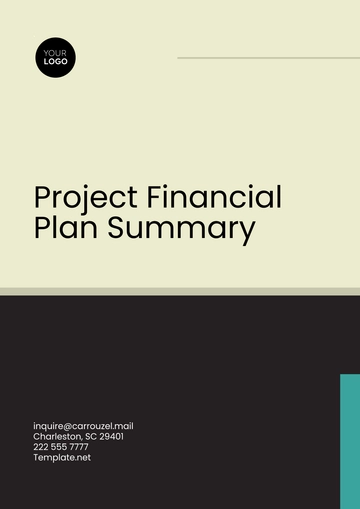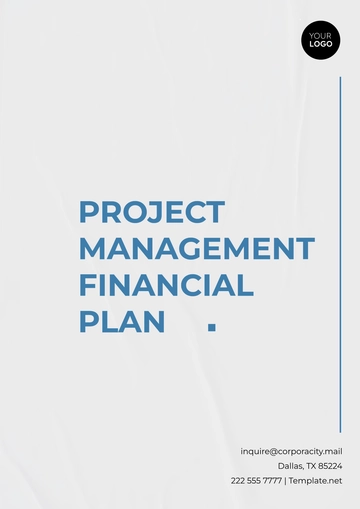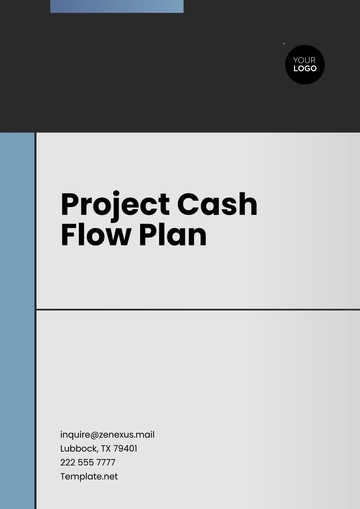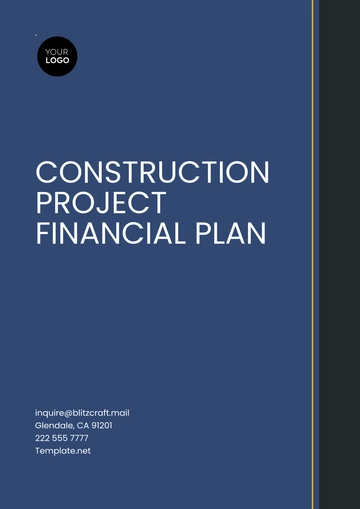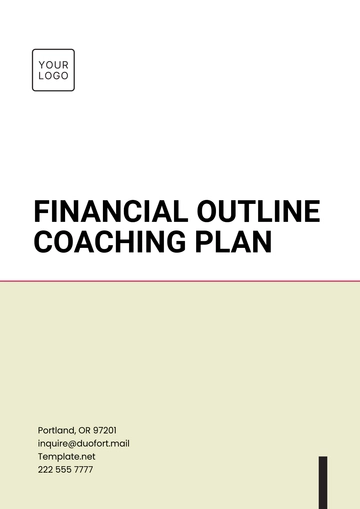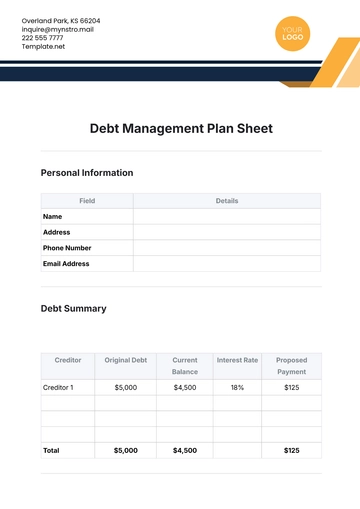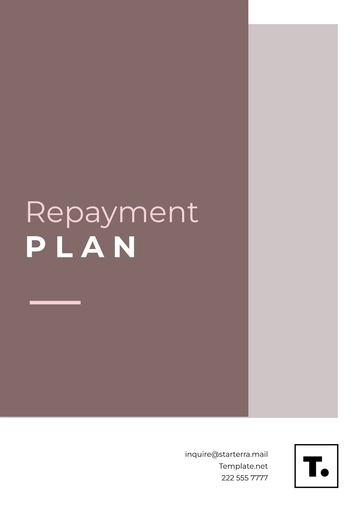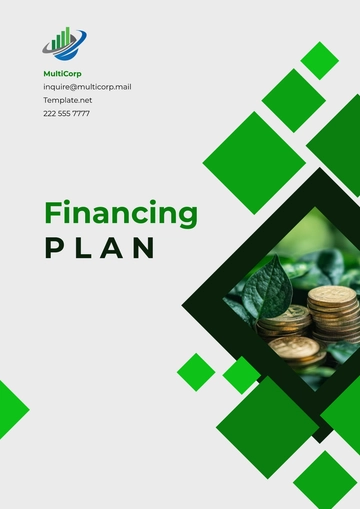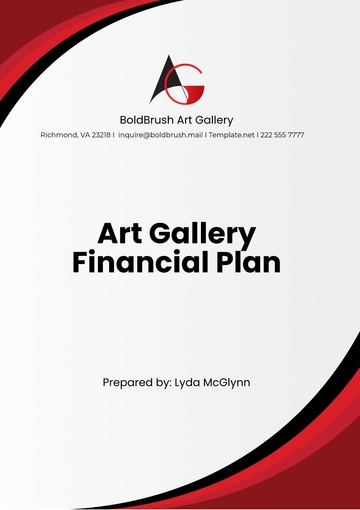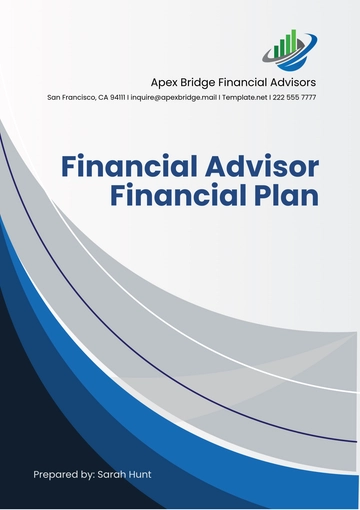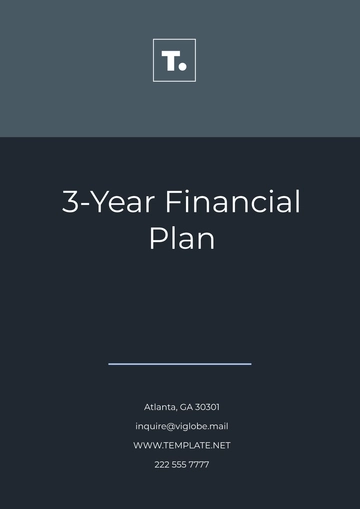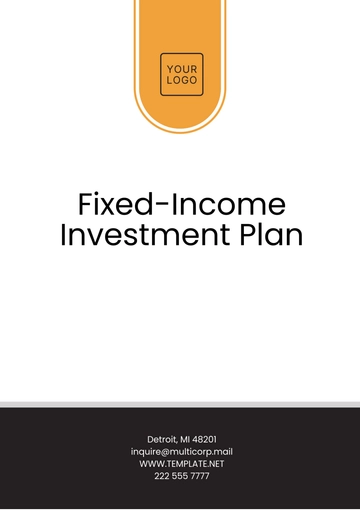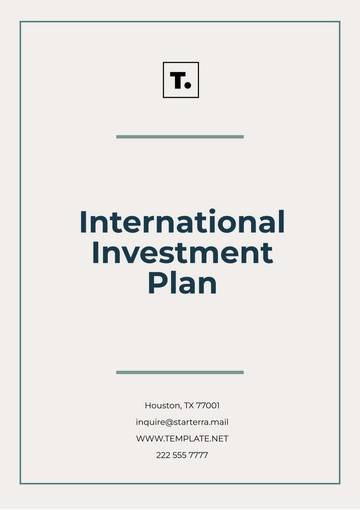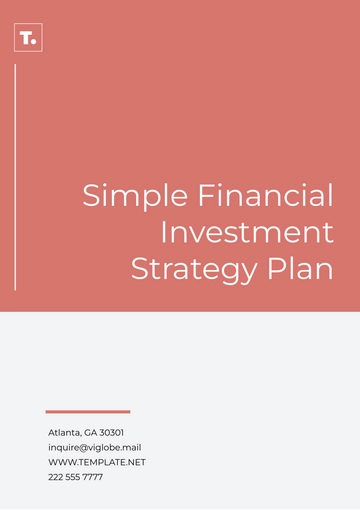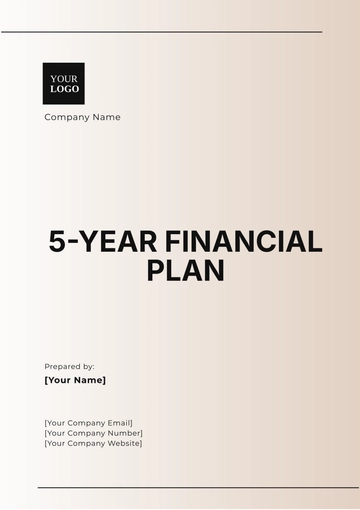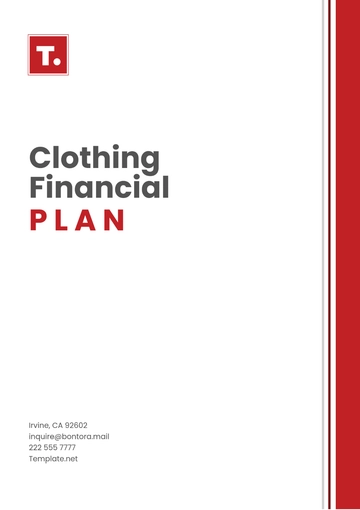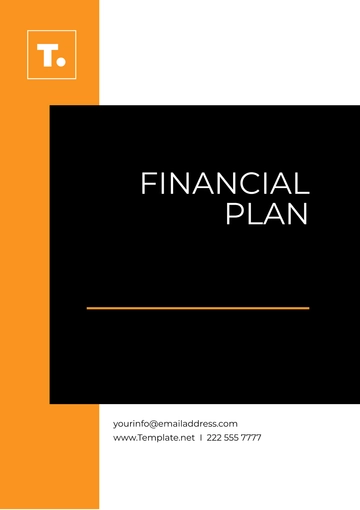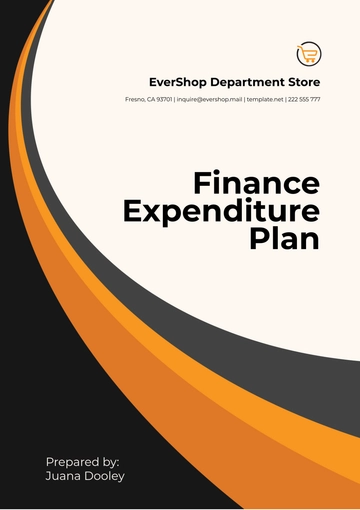Free One Page Financial Plan

Written by: [Your Name]
I. Executive Summary
A. Introduction
[Your Company Name] is pleased to present this personalized financial plan for [Client Name]. Our comprehensive approach encompasses [Client Name]'s current financial status, long-term goals, and strategies for achieving financial success.
B. Financial Goals
Retirement Planning: [Client Name] aims to retire at age 65 with a comfortable income stream.
Education Fund: Saving for [Child's Name]'s education expenses, targeting $100,000 by 2055.
Emergency Fund: Building an emergency fund equivalent to 6 months of living expenses.
Debt Management: Paying off credit card debt within 5 years.
C. Financial Snapshot
Total Assets: $750,000
Total Liabilities: $250,000
Net Worth: $500,000
II. Financial Assessment
A. Income
[Client Name] earns a monthly income of $6,000, primarily from their job as a software engineer. Additional income streams include rental income from investment properties.
B. Expenses
Monthly expenses include:
Housing: $1,500
Utilities: $300
Transportation: $400
Groceries: $500
Entertainment: $200
C. Assets
Real Estate: Property valued at $500,000
Investments: Portfolio worth $200,000
Savings: Savings account balance of $50,000
Retirement Accounts: 401(k) and IRA totaling $300,000
D. Liabilities
Mortgage: Remaining balance of $200,000 on primary residence.
Credit Card Debt: Total outstanding balance of $20,000.
Student Loans: No outstanding student loan debt.
III. Financial Goals and Strategies
A. Retirement Planning
[Client Name] plans to retire at age 65 with a desired annual income of $60,000. To achieve this goal, we recommend:
Increasing 401(k) contributions to 10% of income.
Exploring additional retirement investment options such as IRAs or annuities.
Regularly reviewing investment portfolio performance and adjusting allocations as needed.
B. Education Fund
To fund [Child's Name]'s education expenses, [Client Name] aims to accumulate $100,000 by 2055. Strategies include:
Setting up a 529 savings plan.
Contributing $300 monthly towards the education fund.
Exploring scholarship and grant opportunities.
C. Emergency Fund
Building an emergency fund equivalent to 6 months of living expenses is essential for financial security. Strategies include:
Setting aside $3,000 monthly until the desired fund size is reached.
Keeping emergency funds in a high-yield savings account or money market fund for easy access.
D. Debt Management
To eliminate credit card debt within 5 years, [Client Name] will:
Create a debt repayment plan, prioritizing high-interest debts first.
Allocate $500 monthly towards debt repayment while maintaining minimum payments on other debts.
Avoid accruing additional debt by budgeting carefully and reducing discretionary spending.
IV. Monitoring and Review
Regular monitoring and review of the financial plan are essential to ensure progress toward goals and make necessary adjustments.
Frequency: Quarterly
Review Process: Scheduled meetings with [Client Name] to assess progress, review changes in income, expenses, and investment performance, and make adjustments to the plan as needed.
Documentation: Detailed records of meetings, plan adjustments, and updated financial statements will be maintained for reference and analysis.
V. Conclusion
In conclusion, this financial plan outlines tailored strategies to help [Client Name] achieve their financial goals. By implementing the recommended actions and regularly reviewing progress, [Your Company Name] is committed to guiding [Client Name] toward financial success and peace of mind. Update beneficiary information on retirement accounts and insurance policies
For further inquiries or detailed discussions, please feel free to contact:
Financial Advisor: [Your Name]
Email: [Your Email]
Phone: [Your Company Number]
Company: [Your Company Name]
Address: [Your Company Address]
- 100% Customizable, free editor
- Access 1 Million+ Templates, photo’s & graphics
- Download or share as a template
- Click and replace photos, graphics, text, backgrounds
- Resize, crop, AI write & more
- Access advanced editor
Craft your financial future with ease using the One Page Financial Plan Template from Template.net. This editable and customizable tool simplifies financial planning, offering clarity in a single page. Seamlessly edit in our AI Editor Tool, ensuring tailored solutions to your unique financial goals. Start building your path to financial success today with this intuitive template.
You may also like
- Finance Plan
- Construction Plan
- Sales Plan
- Development Plan
- Career Plan
- Budget Plan
- HR Plan
- Education Plan
- Transition Plan
- Work Plan
- Training Plan
- Communication Plan
- Operation Plan
- Health And Safety Plan
- Strategy Plan
- Professional Development Plan
- Advertising Plan
- Risk Management Plan
- Restaurant Plan
- School Plan
- Nursing Home Patient Care Plan
- Nursing Care Plan
- Plan Event
- Startup Plan
- Social Media Plan
- Staffing Plan
- Annual Plan
- Content Plan
- Payment Plan
- Implementation Plan
- Hotel Plan
- Workout Plan
- Accounting Plan
- Campaign Plan
- Essay Plan
- 30 60 90 Day Plan
- Research Plan
- Recruitment Plan
- 90 Day Plan
- Quarterly Plan
- Emergency Plan
- 5 Year Plan
- Gym Plan
- Personal Plan
- IT and Software Plan
- Treatment Plan
- Real Estate Plan
- Law Firm Plan
- Healthcare Plan
- Improvement Plan
- Media Plan
- 5 Year Business Plan
- Learning Plan
- Marketing Campaign Plan
- Travel Agency Plan
- Cleaning Services Plan
- Interior Design Plan
- Performance Plan
- PR Plan
- Birth Plan
- Life Plan
- SEO Plan
- Disaster Recovery Plan
- Continuity Plan
- Launch Plan
- Legal Plan
- Behavior Plan
- Performance Improvement Plan
- Salon Plan
- Security Plan
- Security Management Plan
- Employee Development Plan
- Quality Plan
- Service Improvement Plan
- Growth Plan
- Incident Response Plan
- Basketball Plan
- Emergency Action Plan
- Product Launch Plan
- Spa Plan
- Employee Training Plan
- Data Analysis Plan
- Employee Action Plan
- Territory Plan
- Audit Plan
- Classroom Plan
- Activity Plan
- Parenting Plan
- Care Plan
- Project Execution Plan
- Exercise Plan
- Internship Plan
- Software Development Plan
- Continuous Improvement Plan
- Leave Plan
- 90 Day Sales Plan
- Advertising Agency Plan
- Employee Transition Plan
- Smart Action Plan
- Workplace Safety Plan
- Behavior Change Plan
- Contingency Plan
- Continuity of Operations Plan
- Health Plan
- Quality Control Plan
- Self Plan
- Sports Development Plan
- Change Management Plan
- Ecommerce Plan
- Personal Financial Plan
- Process Improvement Plan
- 30-60-90 Day Sales Plan
- Crisis Management Plan
- Engagement Plan
- Execution Plan
- Pandemic Plan
- Quality Assurance Plan
- Service Continuity Plan
- Agile Project Plan
- Fundraising Plan
- Job Transition Plan
- Asset Maintenance Plan
- Maintenance Plan
- Software Test Plan
- Staff Training and Development Plan
- 3 Year Plan
- Brand Activation Plan
- Release Plan
- Resource Plan
- Risk Mitigation Plan
- Teacher Plan
- 30 60 90 Day Plan for New Manager
- Food Safety Plan
- Food Truck Plan
- Hiring Plan
- Quality Management Plan
- Wellness Plan
- Behavior Intervention Plan
- Bonus Plan
- Investment Plan
- Maternity Leave Plan
- Pandemic Response Plan
- Succession Planning
- Coaching Plan
- Configuration Management Plan
- Remote Work Plan
- Self Care Plan
- Teaching Plan
- 100-Day Plan
- HACCP Plan
- Student Plan
- Sustainability Plan
- 30 60 90 Day Plan for Interview
- Access Plan
- Site Specific Safety Plan

